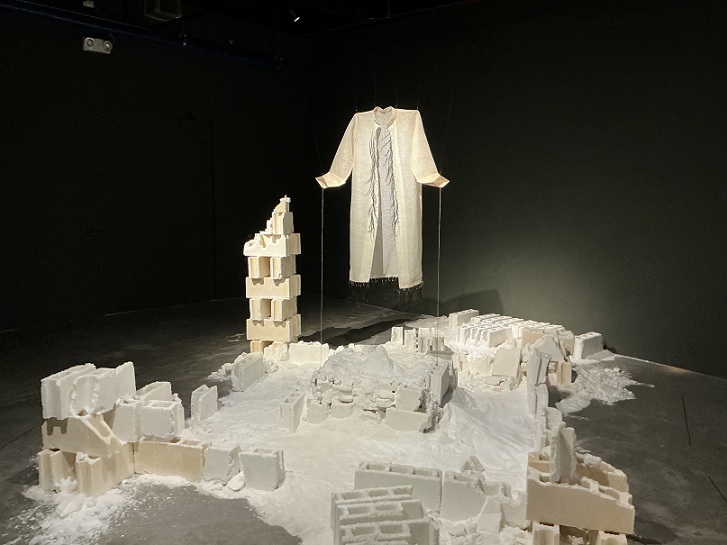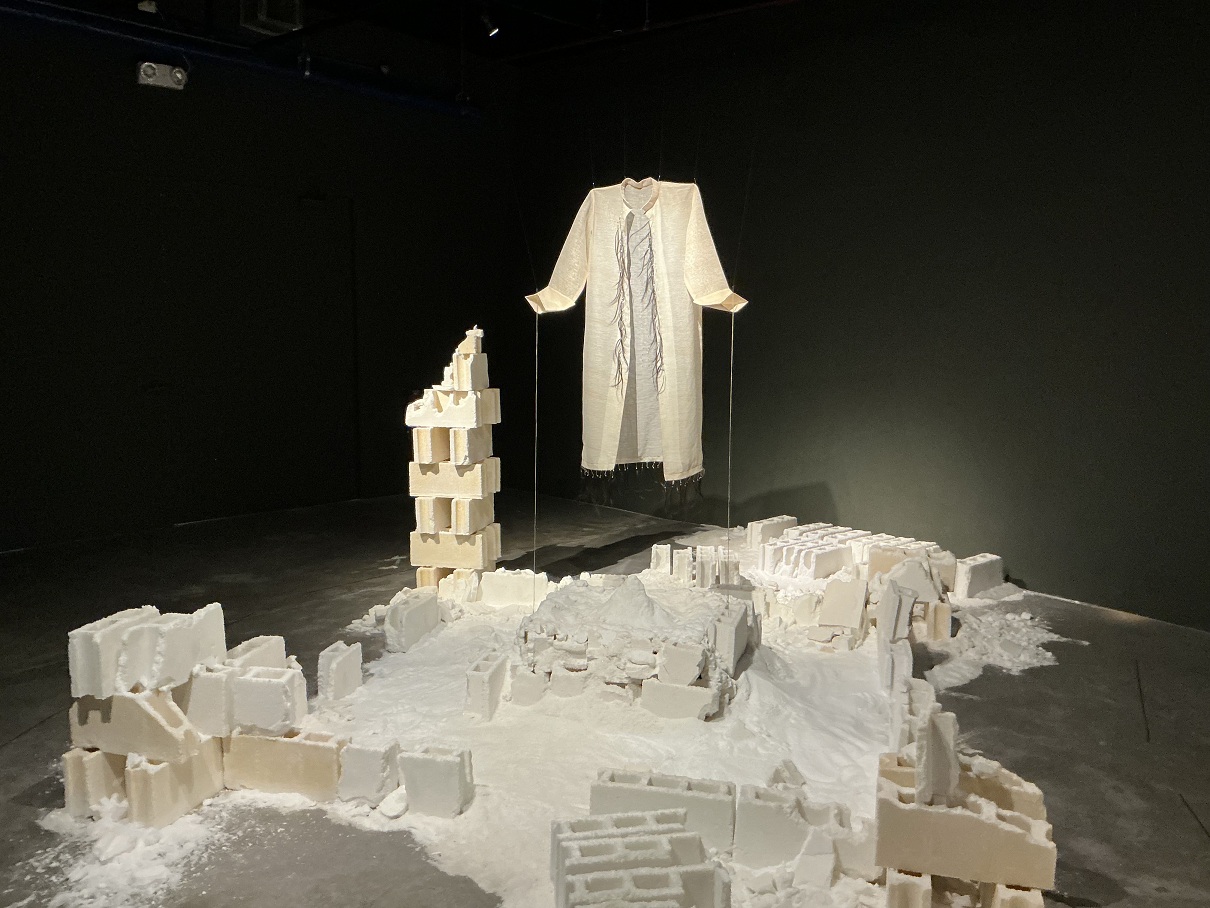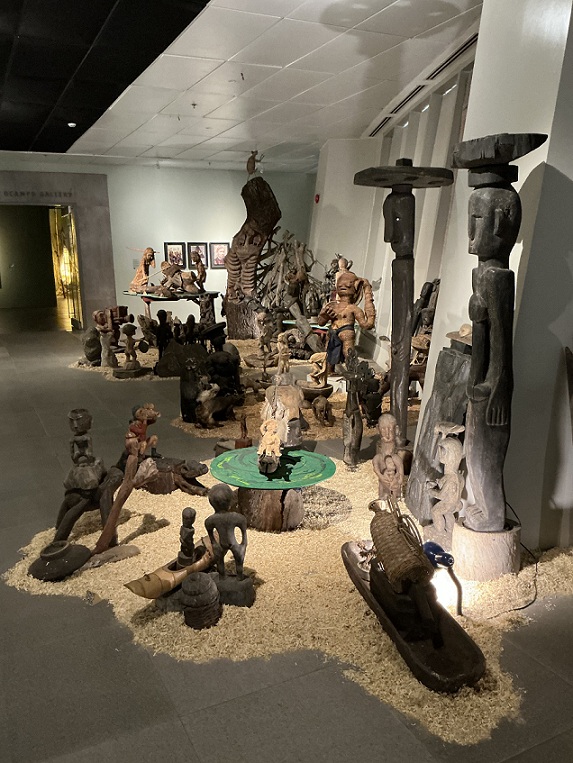
A major exhibition of Baguio art, Gongs. Smoke. Blood.Earth explores “the history and cultural contexts” of Baguio art since the founding of the Baguio Art Guild in 1986. With the participation of 30 artists at the Ateneo Art Gallery, the exhibit will run until 20 July 2025. Kawayan de Guia and Nona Garcia are guest curators.
BenCab’s sketch of 25 Baguio Art Guild members hangs on a wall along the corridor to the main exhibition; a dog gazes at it, one of the 15 black dogs in the exhibit made of alnos wood, carved by Dehon Taguyungon (b. 1989).
Setting the tone, three clusters of Kidlat Tahimik’s Dap-ay Trilogy of IndioGenius Tales line the corridor. We can almost hear the rhythmic beating of the gongs, eerily transporting us to a space where humans and spirits commune, drink tapuy or rice wine, and share the food and fire. Listen to stories, myths, and legends; celebrate an abundant harvest, an auspicious moon, a good victory.
The dap-ay is present in several works; it is a raised circular platform of stones; a sacred meeting space for the Ifugao.
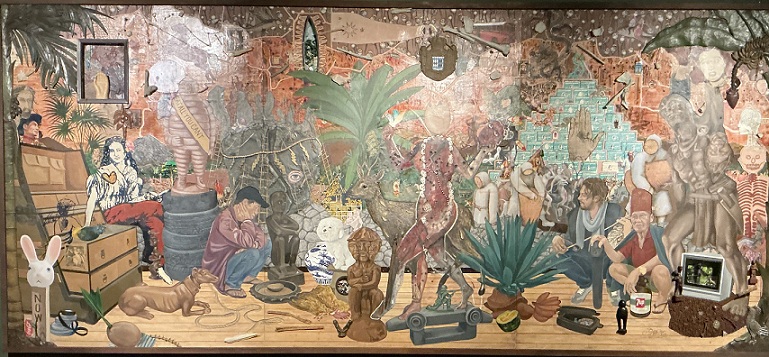
Fabric art is seen in the works of Carlo Villafuerte (b. 1978), Coming Home, 2017; Irene Bawer Bimuyag (b. 1976), Tree of Life, 2025 and Balatik, 2025, embroidery on handwoven textiles; and Gail Vicente (b. 1984), Forest Blanket: They, You, We, I, 2025.
The installations of Perry Martin Mamaril (b.1960), Creatures 1-4, 2025; Rocky Acofo Cajigan (b. 1988), A Temple for Those Who Have Never Seen the Sea, 2025; Randy Gawwi (b 1983), Gulgulait, 2025, and Willy Magtibay (b. 1954), Dalikan, 2024 all offer a different way of looking at space.
Selected artists
Roberto Villanueva (1947-1995): With a BFA from the University of Santo Tomas, he taught at the Philippine Women’s University. After moving to Baguio in 1978, he had always included community participation in his artmaking. Drawing energy and inspiration from the customs and values of the Cordilleras, he used mostly organic and local materials, combining art with environmental activism. Almost nothing remains of his work today.
A recipient of the CCP Thirteen Artists Awards in 1992, Villanueva won critical acclaim with his massive site-specific installation, Archetypes: Cordillera’s Labyrinth, set up in the grounds of the CCP in 1989. A spiral labyrinth made of bamboo and reeds, its center as dap-ay covered with river rocks and spirit figures.
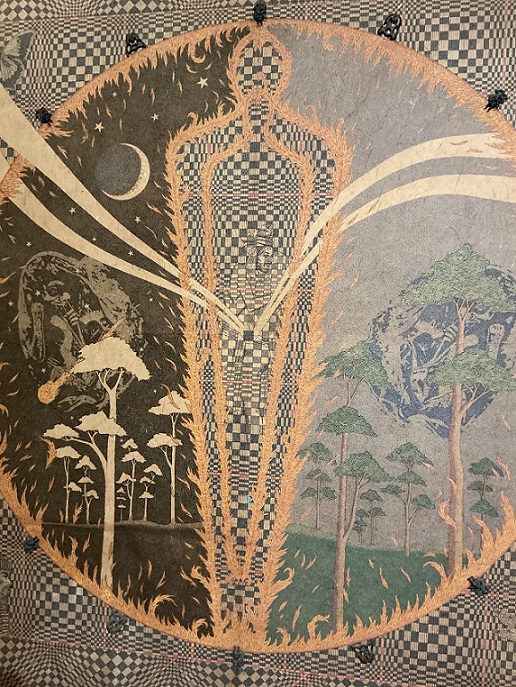
Santiago Bose (1949-2002): A mixed media artist, educator, and community organizer, he was a pioneer in the use of indigenous materials in art. He received the CCP Thirteen Artists Awards in 1976 and observed that “the artist articulates the Filipino subconscious so that we may be able to show a true picture of ourselves and our world.”
Kidlat Tahimik (b. 1942): National Artist for Film, 2018. An independent filmmaker and visual artist from Baguio City, his film Mababangong Bangungot (1977), a critique of postcolonial development, earned him international acclaim. It won the International Critics Award, 27th Berlin Film Festival, 1977. His family of artists are participants in the exhibit: wife Katrin (b. 1950), and sons, Kawayan (b.1979) and Kidlat de Guia (1975-2022).
His latest exhibition at the National Museum was Indio-Genius: 500 Taon ng Labanang Kultural (1521-2021) in 2022.
Tommy Hafalla (b. 1957): A Baguio-based photographer, he has been documenting the way of life and rituals of indigenous communities in the Cordillera for over 30 years. His photobook Ili (2016) meaning “home village” documents how tradition and culture evolve in the face of modernity.
Perry Martin Mamaril (b.1960): He grew up in Balatoc, a mining town in Benguet, and later moved to New York, staying for 20 years. Creating large-scale bamboo light sculptures for over three decades, his bamboo installations may be a boat, stingray, dolphin, whale, or centipede, capitalizing on bamboo’s lightness, strength, and flexibility.
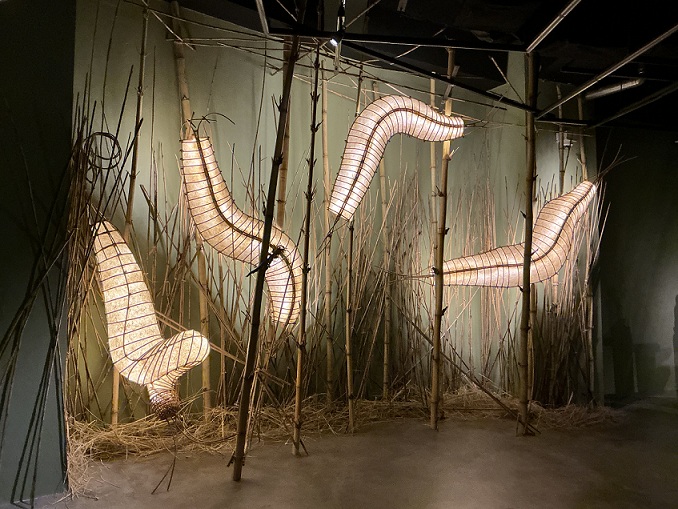
Leonard Aguinaldo (b.1967). Described “as highly illustrational and graphic,” his style has been influenced by being a printmaker. He received the Grand Prize in the Asean Art Awards, 2004 and the CCP Thirteen Artists Awards, 2003.
John Frank Sabado (b. 1969) A self-taught artist, his intricate works draw inspiration from Cordillera culture. One of his early masterpieces, an ink on plywood, Shamanic Journey (Tribute to Pepito Bosch and Roberto Villanueva,1995 reveals painstakingly drawn scenes of a ritual on an inabel, an Ilokano blanket, and overlaid with tiny metal knives and other metallic objects with animal motifs. He is a recipient of the CCP Thirteen Artists Awards, 2000 and the Juror’s Choice in the Philippine Art Awards, 2001.

Trailblazer
In 1986, a group of artists that included Santiago Bose, Kidlat Tahimik, Benedicto Cabrera, and others founded the Baguio Arts Guild. It organized the Baguio Art Festival from the late1980s to 2002, a successful initiative that attracted international participation long before the idea of biennales in the Southeast Asian region.
A bounty of Baguio art awaits to be rediscovered— an enduring testament of Cordillera history and culture, native knowledge and practices— especially its distinctive terroir of indigeneity and aesthetics.
